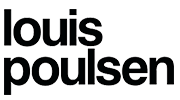Blog
Dِِِirection, Ancillary, Indication

Guide, Ancillary Services, and Indications – A Comprehensive Guide
Introduction
Dِِِirection, Ancillary, Indication:In various fields, the terms Guide (Direction), Ancillary Services (Ancillary), and Indications (Indication) play crucial roles. Whether in medicine, engineering, business, or project management, these words hold significant meaning and impact. This article provides a detailed analysis of these concepts, explaining their definitions, applications, and interconnections.
1. Definition and Meaning
1.1 Guide (Path, Direction, Instruction)
Definition:
- The path or direction in which something moves or is located.
- Guidance or management of actions.
- In medicine, it can refer to a physician’s prescription.
- In physics, it describes the orientation of a vector.
- In business, it is defined as a strategic plan or vision.
Examples:
- “Follow the guide to reach your destination.”
- “The company needs a clear guide for success.”
- “The doctor’s guide was to take the medication twice a day.”
- “The direction of technological innovation shapes the future.”
1.2 Ancillary Services (Supplementary, Auxiliary, Supportive)
Definition:
- Something that complements or supports the primary function.
- In medicine, it refers to auxiliary medical services such as radiology and physiotherapy.
- In engineering, it includes secondary systems that support the main system.
- In business, it includes support services such as customer support, logistics, and marketing.
Examples:
- “Ancillary services like emergency backup power are crucial for hospitals.”
- “This company supports logistics firms with ancillary services.”
- “Revenue from ancillary services such as advertisements increased website earnings.”
- “Cloud storage is an ancillary service for core business applications.”
1.3 Indications (Signs, Signals, Medical Application)
Definition:
- A sign or signal that indicates something.
- In medicine, it determines the reason for prescribing a specific treatment.
- In engineering, it includes system signals or warning indicators.
- In business, it includes key performance indicators (KPIs) and financial metrics.
Examples:
- “High fever is an indication of infection.”
- “The doctor prescribed medication based on the indication of bacterial infection.”
- “The fuel gauge indication shows a low level.”
- “Customer engagement levels are an indication of brand loyalty.”
2. Applications in Different Fields
2.1 Medical Field
Guide:
- Doctors provide instructions regarding medication use, treatment plans, and patient care.
Ancillary Services:
- Radiology, physiotherapy, and medical tests support primary treatment.
Indications:
- Symptoms determine which treatment should be prescribed.
✍ Example: A doctor provides a guide for taking antibiotics for a throat infection. The patient undergoes ancillary services such as a throat culture test. The indication for prescribing antibiotics is the presence of a bacterial infection.
2.2 Engineering and Technology
Guide:
- Orientation or control of processes (e.g., movement of electrical currents, mechanical force vectors).
Ancillary Systems:
- Supporting components such as cooling systems, backup generators, and lubrication units.
Indications:
- Sensor readings, warning lights, or temperature indicators showing system status.
✍ Example: In a power plant, the guide directs the electricity flow in pre-planned circuits. Ancillary systems such as cooling prevent overheating. Indications alert the operator if the temperature exceeds safe limits.
2.3 Business and Management
Guide:
- The company’s vision, strategy, and decision-making processes.
Ancillary Services:
- Additional revenue streams, outsourced operations, or business support services.
Indications:
- Market trends, customer feedback, and financial reports guiding decision-making.
✍ Example: A business establishes a guide for expanding into e-commerce. It utilizes ancillary services such as third-party logistics and digital marketing. Market demand analysis provides indications of potential success.
3. The Interconnection of These Concepts
These three terms often work together. For example, in the healthcare sector:
- Guide: Doctors provide treatment instructions.
- Ancillary Services: Supporting medical services are provided.
- Indications: Symptoms guide diagnostic and treatment decisions.
Similarly, in engineering and management, the guide directs processes, ancillary services support primary functions, and indications assist in decision-making improvements.
Conclusion
Dِِِirection, Ancillary, Indication:Understanding the terms Guide, Ancillary Services, and Indications is essential across various industries. From healthcare and engineering to management and digital marketing, these concepts guide processes, support operations, and provide essential insights. By recognizing their roles, professionals can optimize efficiency, improve decision-making, and enhance overall effectiveness.








